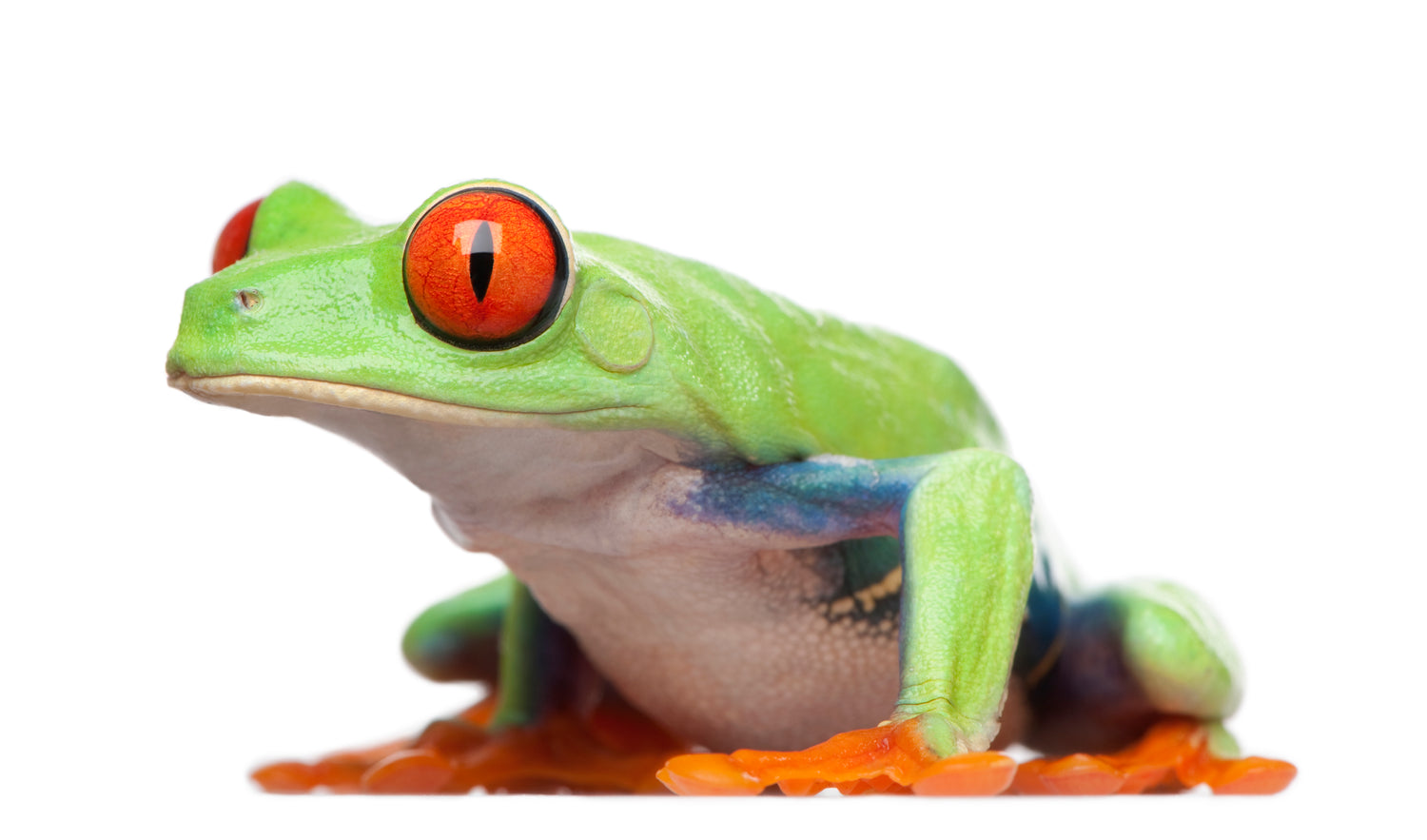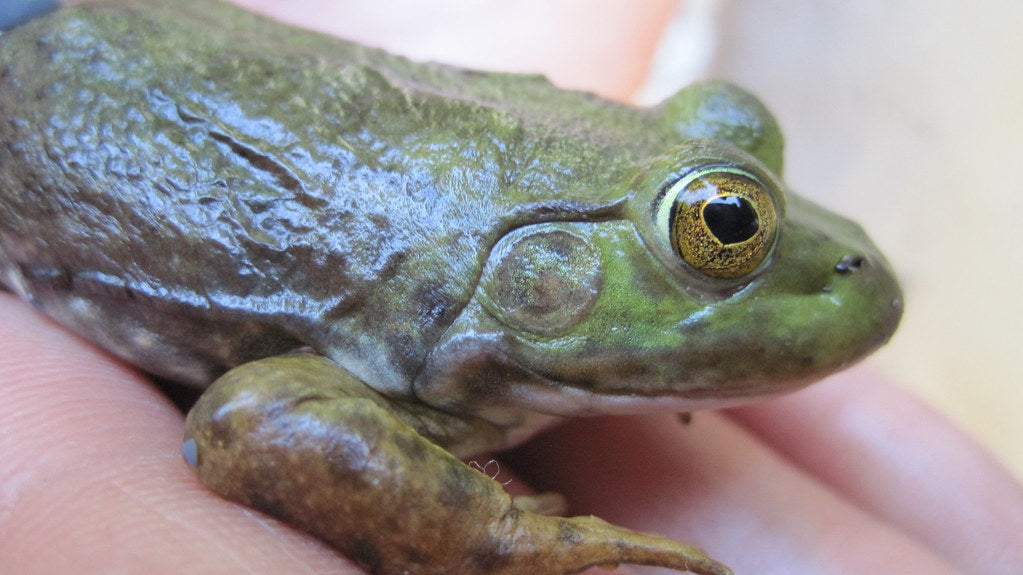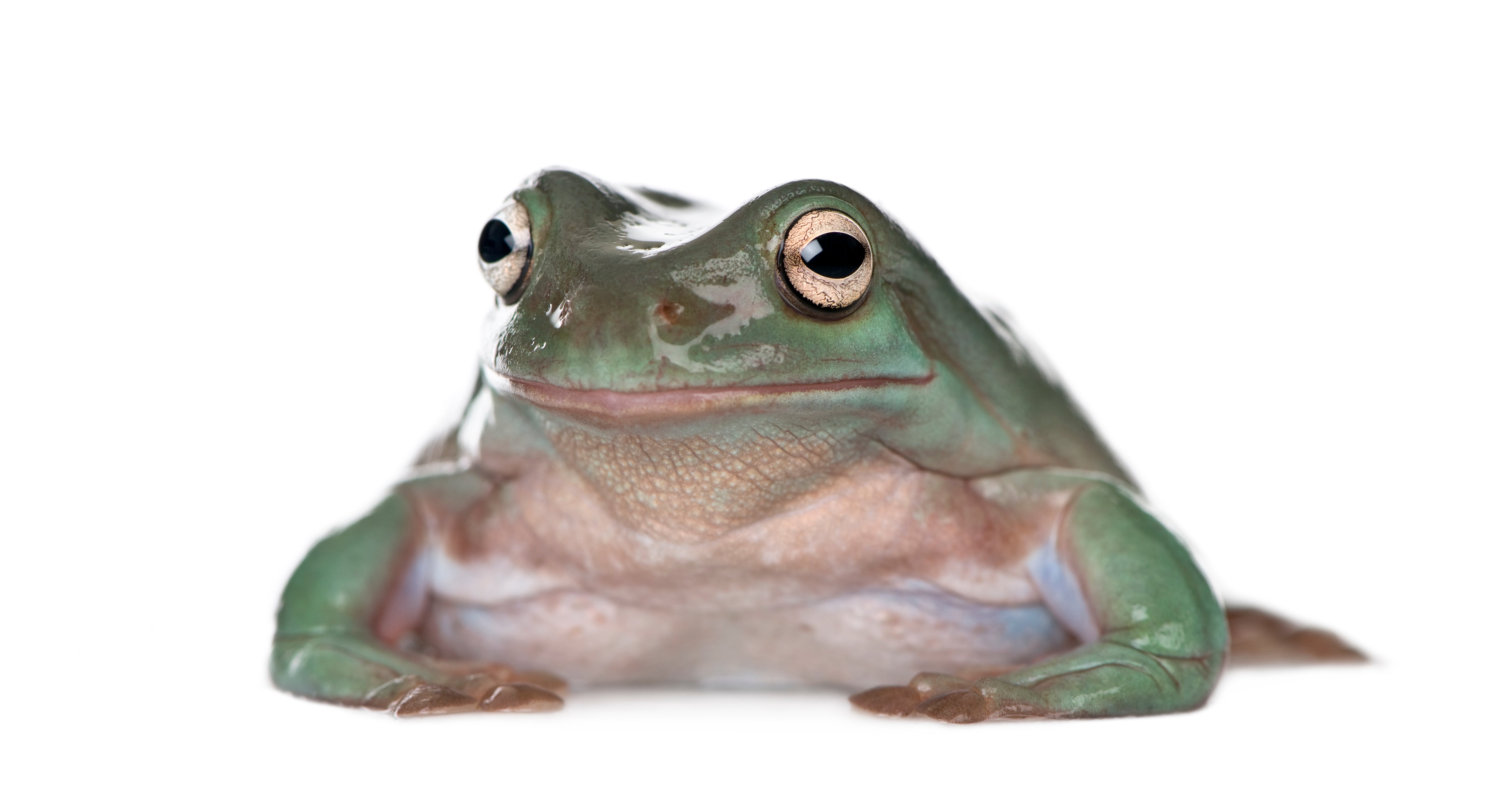Red-eyed tree frogs (Agalychnis callidryas) are small, nocturnal, arboreal amphibians native to most of Central America, excluding most of Mexico. They prefer the canopy of tropical forests for habitat, usually near a body of water.
Red-eyed tree frogs are slender, 3-4” frogs with large eyes, vertical pupils, long limbs, and round toes. They are best known for their coloring, which is primarily bright green with blue and yellow striped sides, orange feet, and of course, bright red eyes. This vibrant coloring is the primary reason why this species is popular in captivity.
Red-eyed tree frogs require high humidity and are sensitive to inadequate husbandry, making them intermediate-level pet amphibians. With good care, they may live as long as 10 years.
How much space do red-eyed tree frogs need?
18”L x 18”W x 24”H is a good starting point for housing one red-eyed tree frog. Of course, larger is always better!
Cohabitation (keeping multiple tree frogs in one enclosure) is fairly common, as red-eyed tree frogs seem to do well in groups. However, they can do well when housed alone as well. If you want to house a group of red-eyed tree frogs, you will need a larger enclosure.
Do red-eyed tree frogs need UVB?
They can certainly survive without it, but it’s still best practice to provide low levels of UVB lighting for optimal health and wellbeing. Providing UVB lighting to your frog gives them all of the vitamin D that their body needs, stimulates better appetite and activity, and generally allows them to be healthier than they would be without.
The best UVB bulbs for red-eyed tree frogs are:
- Zoo Med T8 Reptisun 5.0
- Arcadia ShadeDweller
The UVB bulb should be housed in a reflective fixture, and the frog should not be able to get closer than 6” below the lamp. If necessary, you can increase the distance between the basking branch and UVB lamp by lifting the lamp up on spacer blocks. UVB is blocked by glass and plastic, so you can’t give your frog UVB by placing its terrarium in front of an open window. UVB bulbs decay over time, so don’t forget to replace your bulb every 12 months to maintain good performance.
Lights should be on for 14 hours/day during summer and 10 hours/day during winter to replicate natural seasonal cycles. This can promote healthier hormonal rhythms and better long-term health.
What temperatures do red-eyed tree frogs need?
Red-eyed tree frogs are ectotherms, which means that they rely on the temperature of their environment to help regulate their metabolism and stay healthy. If they’re too cold, they won’t have enough energy to stay active and digest their food. If they’re too warm, they can die from heat stress.
The ambient temperature of the enclosure should stay between 72-78°F during the day, and may drop as low as 66°F at night. It is best to provide a “basking” area at the top of the enclosure around 84°F. Measure air temperatures with a digital probe thermometer, with the probe placed in the middle of the enclosure.
To create the basking area, use a dome-style heat lamp with a low-wattage, white incandescent heat bulb. This simulates a sunbeam coming through the canopy, and provides an area of warmth for the frog to use as desired. If it’s too hot, use a lamp dimmer to dial it down. If too cool, you’ll need a higher wattage bulb.
What humidity levels do red-eyed tree frogs need?
As amphibians, red-eyed tree frogs are very dependent on water. Air humidity should average between 60-80%, with occasional spikes up to 100%, as measured by a digital probe hygrometer. Humidity will naturally be lower during the day than at night. Misting your frog’s enclosure 2x daily with a sprayer will help create the right humidity levels. Using an automatic misting system and/or fogger can also be helpful.
Do not use distilled or reverse-osmosis water for misting amphibians, as this can be harmful to their skin. Instead, use dechlorinated tap water or spring water. This same rule applies to any drinking water that is provided. However, distilled is fine to use with foggers.
What substrate is good for red-eyed tree frogs?
Red-eyed tree frogs require a thick layer of moisture-retentive substrate to help maintain healthy humidity levels. As an added perk, it also tends to make the enclosure more attractive.
This substrate should have small particles and hold moisture well. It should also be able to support plant life if you are using live plants, such as Zoo Med ReptiSoil. Bioactive substrate is arguably best for allowing minimally invasive husbandry, but if you’d rather not go this route, coconut fiber or sphagnum moss layered with leaf litter works well.
If you are not using a bioactive setup, substrate should be replaced monthly in order to maintain good hygiene.
What décor can you use in a red-eyed tree frog terrarium?
It’s terribly boring for a frog to be stuck in an enclosure with nothing in it. It doesn’t matter how big the enclosure is if you don’t put things in it for your pet to use and interact with.
Décor options for red-eyed tree frogs include:
- branches
- cork tubes
- moss
- live or artificial plants
- bromeliads
Whatever you choose to use, make sure that the frog has cover to hide in so they can feel secure in their environment.
What do red-eyed tree frogs eat?
Red-eyed tree frogs are insectivores, which means that they need to eat insect prey in order to get the nutrition that they need. Young frogs should be fed daily, but adults should be fed every 2-3 days to prevent obesity. Offer as many insects in one feeding as the frogs will clean up in about 15-30 minutes.
Insect options for red-eyed tree frogs:
- Black soldier fly larvae and flies
- Crickets
- Discoid roaches
- Dubia roaches
- Earthworms
- Hornworms
- Silkworms
For best results, offer as much variety in your frogs’ diet as possible. Feeders should be offered live and measure no wider than the space between the frog’s eyes.
Supplements
Red-eyed tree frogs need vitamin and mineral supplements to enjoy optimal health. Dust their feeder insects with Repashy Calcium Plus LoD once a week.
Do red-eyed tree frogs like to be handled?
Very few amphibians actually “like” to be held, and red-eyed frogs are not one of them. Handling is stressful for them, so it’s best to content yourself with keeping them as a display animal than to try to get hands-on.
If you must grab your frog, put on a pair of disposable gloves, grasp it firmly but gently, and keep handling time to a minimum. If you would like to interact with your pet, a better method is to offer food via soft-tipped feeding tongs.
*This care sheet contains only very basic information. Although it’s a good introduction, please do further research with high-quality sources to obtain additional information on caring for this species.




Leave a comment
This site is protected by hCaptcha and the hCaptcha Privacy Policy and Terms of Service apply.